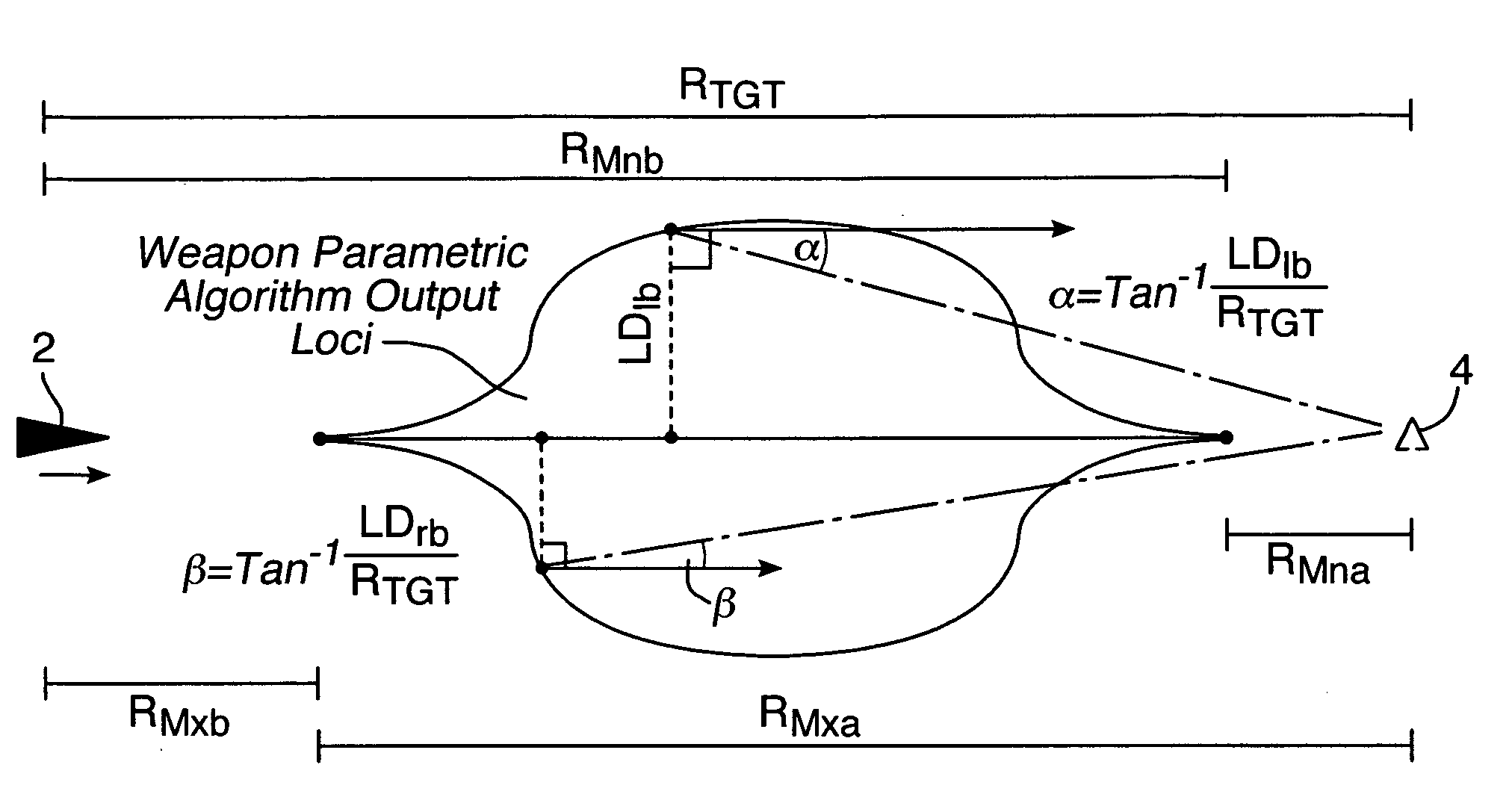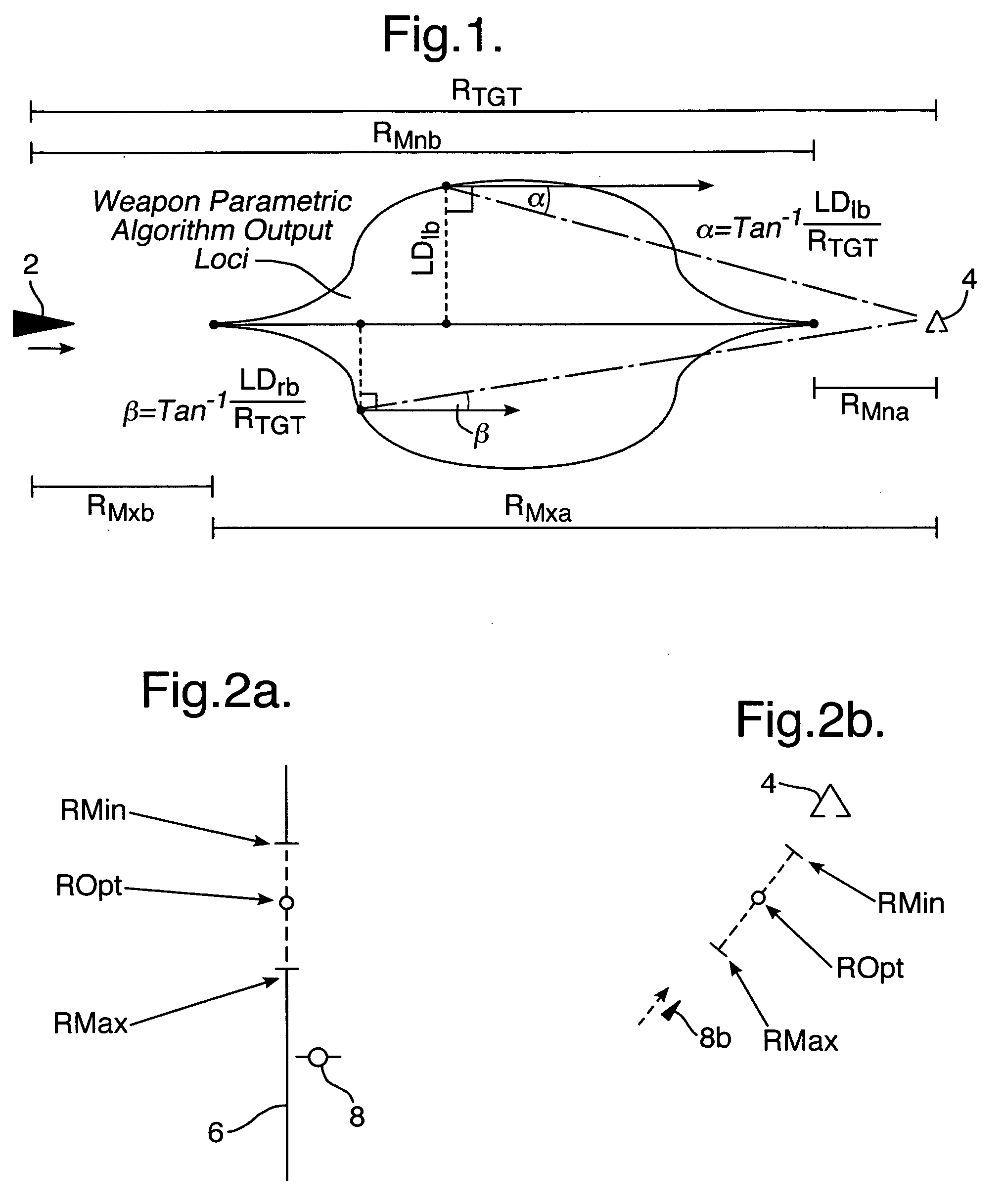Aircraft target display
a technology for aircraft and target displays, applied in weapons, analogue computers, hybrid computing, etc., can solve the problems of increasing pilot workload, unnecessarily restricting aircraft's freedom to alter flight paths, and needing to comply with pre-planned flight conditions and approach paths, so as to facilitate an attack and ease the workload of pilots.
- Summary
- Abstract
- Description
- Claims
- Application Information
AI Technical Summary
Benefits of technology
Problems solved by technology
Method used
Image
Examples
Embodiment Construction
[0027]The present invention will now be described by way of example only and with reference to the accompanying drawings.
[0028]The present invention involves representing different “degrees of freedom” regarding where the aircraft can afford to be, prior to weapon release, if the weapon is to engage the target. This is inherently dependent on the maneuverability or flight characteristics of the weapon as well as on the position and flight conditions of the aircraft carrying the weapon.
[0029]As an aircraft approaches a target, the earliest possible weapon release point, at which the weapon is capable of engaging the target is dictated by the weapon's ability to prolong its flight path, such as by “pitching up” to induce a glide for as long as possible. The latest possible weapon release point is dictated by the weapon” ability to shorten its flight path. Between the earliest and latest possible weapon release points is a release range envelope, which is the “launch acceptable region”...
PUM
 Login to View More
Login to View More Abstract
Description
Claims
Application Information
 Login to View More
Login to View More - R&D
- Intellectual Property
- Life Sciences
- Materials
- Tech Scout
- Unparalleled Data Quality
- Higher Quality Content
- 60% Fewer Hallucinations
Browse by: Latest US Patents, China's latest patents, Technical Efficacy Thesaurus, Application Domain, Technology Topic, Popular Technical Reports.
© 2025 PatSnap. All rights reserved.Legal|Privacy policy|Modern Slavery Act Transparency Statement|Sitemap|About US| Contact US: help@patsnap.com



